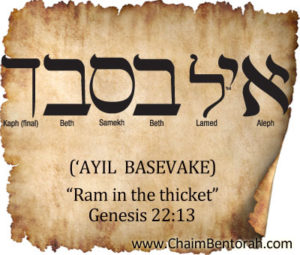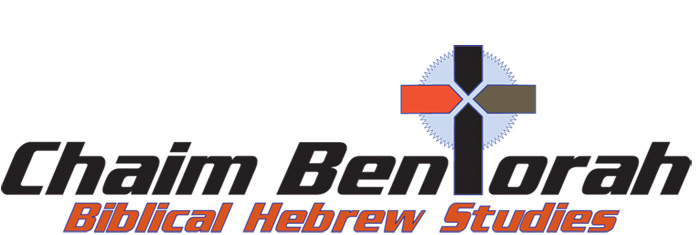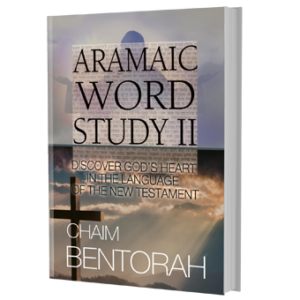QUICK WORD STUDY – RAM IN THE THICKET – ‘AYIL BASEVAKE איל. בסבכ
Genesis 22:13: “And Abraham lifted up his eyes and looked and behold behind him a ram caught in a thicket by his horns.”
 I never really considered the significance of the ram being caught in the thicket. My initial thought was, well God had to have the ram held in place by something. But as I thought about this, I recalled reading about an archeological discovery made back the thirties in Southern Iraq in the area that was known as Ur. This was Abraham’s hometown.
I never really considered the significance of the ram being caught in the thicket. My initial thought was, well God had to have the ram held in place by something. But as I thought about this, I recalled reading about an archeological discovery made back the thirties in Southern Iraq in the area that was known as Ur. This was Abraham’s hometown.
British Archeologist Charles Leonard Whoolley was excavating the Death Pit of Ur. This was thought to be a graveyard site for kings and nobility from the land of Ur but some felt it was the pit where those who were sacrificed to their god were thrown. Human sacrifices were made to win the favor of their god. He found an object guarding this pit that he called the Ram in the Thicket because it resembled the story in Genesis 22. The image is not so much that of a ram, goat or young bull that appears to be caught in a thicket, but is actually more a picture of a horned animal standing on its hind legs eating something at the top of a bush. This is dated at about 2050 BC. The picture of a horned animal reaching for a high branch would bear out this date as this is when there was a 300-year drought in the land of Ur and goats or similar horned animals would have been reaching high on bushes to eat because such feeding in the wild was scarce due to the draught. Abraham lived or was born about 1815 BC so he would have been born during this draught and more significantly when this symbol of a horned animal was a known symbol. No one really knows what the symbol represents. It is speculated, however, that this somehow represented the gods of that era taking a soul up to heaven. Another idea, which I think is more logical, is that the horned animal reaching up a thicket trying to get the last morsel of food was a picture of the struggle to survive during this 300-year draught and indicated that this was the pit where human sacrifices were thrown.
The word thicket in the Hebrew is savek which means to entwine, or an entwining vine, tree or brush. It is not really a bushy type plant as we would imagine. In fact, a fairly good picture of a savek can be found on the internet if you google up Ram in a Thicket. The word ram is derived for a sort of an all-purpose root word aval which is a word for any animal with horns. It could be a goat, deer, ram or horned bull.
Considering the words for ram and thicket and looking at the picture of the Mesopotamian god guarding the Death Pit I would not be surprised that when Abraham was about to sacrifice his son, God told him to look behind him where he saw an image similar to one he may have seen as a child growing up in the land of Ur to which many children were similarly sacrificed. He saw the image of Marduk or as it is known in the Sumerian language Amar-utu which means the calf of Utu (the sun god) or the young bull of the sun. Amar-utu would fit the Hebrew word aval which translators render as a ram but could also be rendered as a young horned bull.
So when Abraham took the ram or young bull and sacrificed it instead of his son he was putting to death, so to speak, the pagan god Amar-utu, the god of his youth and declaring his complete loyalty to the God Jehovah that revealed Himself to him. God was declaring that He was a God that demanded no human sacrifice of a child to obtain life and life eternal but instead He would offer His own son as a sacrifice to bring life and life eternal to him and to us. Just as Utu demanded the sacrifice of one’s son or daughter in order to grant life, God also demanded the sacrifice of a son, only it would be His Son to grant not only life but eternal life.
OUR “ALL ACCESS” SITE OFFERS TEACHINGS ON MANY SUCH ARCHAEOLOGICAL DISCOVERIES THAT BRING DEEPER UNDERSTANDINGS TO MANY BIBLICAL TEXTS. Click on the link to learn more https://www.chaimbentorah.com/all-access/







there’s lots of maybe’s here. But I would like to add a few more maybe’s:
Maybe if we read the Book of Jasher in conjunction with the Bible we will note that Abraham’s Father – Tera was a Prince in the Kingdom of Nimrod who was an idol worshipper and human sacrificer. Tera himself had a whole temple full of demi-gods that he worshipped. So Abraham was familiar with the human sacrificial system of idol worship which he learned from his own father Tera.
The goat worship (Baphomet) as well as the “Scape-goat” festival where a goat is pardoned and sent into the desert and one sacrificed also refers to goat-ram culture/customs and worship.
That GOD told Abraham to sacrifice a ram or goat may be one of the stories that were added by the Lying Pens of the Scribes and Pharisees
Jeremiah 7: 21 – 31 (For God definitely did NOT give commandments with regard to sacrifices of animals)
Amos 5: 26
Jeremiah 8: 7-8
I loved your article. Just know I am not arguing here, I am just throwing in a few “maybe’s” of my own just for interest sake
Hi
Comments are closed ‘Render unto Caesar’ so I thought I’d post here:)
Your analysis was so helpful and I will be a regular visitor but please don’t do this ‘Science has debunked this..’ etc. without proper references and debate- no less than you offer in your excellent work! All the best
WOW
I am learning so much and thank God for you Chaim
What a great word for today!!! So grateful for your wonderful, insightful teaching!
Blessings!